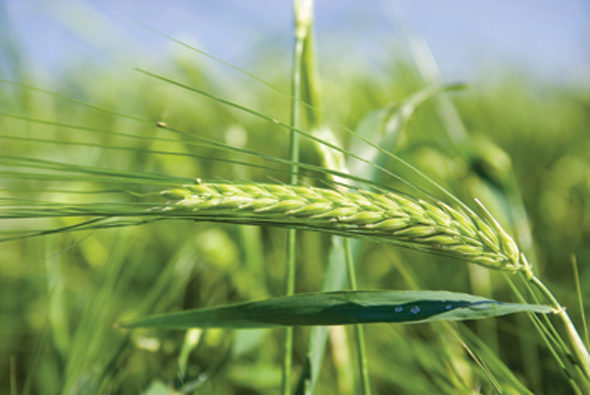There’s a group of shoppers I bet you know well. They enter your store with a determined look, make a beeline for your supplements section and head to the register with a few bottles of green food supplements in their arms. This happens every month or so, with clockwork regularity. In short, they’re green foods die-hards.
What’s the draw? Well, many fans will tell you they “feel great” when they have their greens. They may report having more energy or feeling their immune systems are better equipped to battle foreign invaders. Retailers, you know full-well that while “feeling great” may sell supplements to some customers, other clients want the facts supporting exactly why these effects occur. You know, assurance that the results are more than just psychological.
This article will offer you some information behind why green food lovers won’t give up these supplements, and how to clue in your hesitant clientele about why they may want to join the crowd.
Energize Yourself
Be they in powdered, liquid or tableted form, green food supplements are often comprised of various plant and/or algae compounds that can instill numerous health benefits. Green food supplements are rich in protein, vitamins and minerals, and can be made from spirulina, chlorella, kelp, alfalfa, spinach, broccoli, cereal grasses (like barley, wheat and kamut) and more. Nutrients from these components—easily recognized by the body—are said to be readily incorporated into one’s system. States Bob Capelli, vice president of sales and marketing at Cyanotech, Kailua-Kona, HI, “Green foods nutrition comes in the most natural form, and the body assimilates the nutrients easily leading to increased energy. And, the beautiful thing is this is a natural energy boost that is sustained for several hours—not a quick ‘pick me up’ that leads to an energy crash shortly afterward.”
To fully understand how this natural “pick me up” occurs, let’s talk biology. For the body to function most efficiently, it must be healthy at the cellular level. Nerve signals must fire appropriately, hormones and enzymes need to secrete at the proper time and special cells (like those in the immune system) must do their respective jobs properly. Like many things in nature, our body’s internal functions take place in a delicate balance that can be thrown off by illness, stress, poor nutrition and the like.
 Having just the right alkalinity balance is a great example. If one’s pH drops low on the scale and into the acidic range, cellular electrical biochemistry may be affected. For instance, red blood cells each have a negative charge to help prevent them from clumping together. When the charge is stripped (which can sometimes be caused by a too-acidic pH), the red bloods clump together. This makes it harder for them to travel through the vascular system and deliver oxygen. Eventually, one who is experiencing this effect might feel tired and sluggish (1).
Having just the right alkalinity balance is a great example. If one’s pH drops low on the scale and into the acidic range, cellular electrical biochemistry may be affected. For instance, red blood cells each have a negative charge to help prevent them from clumping together. When the charge is stripped (which can sometimes be caused by a too-acidic pH), the red bloods clump together. This makes it harder for them to travel through the vascular system and deliver oxygen. Eventually, one who is experiencing this effect might feel tired and sluggish (1).
Unfortunately, too many people are in the acidic range thanks to a poor diet loaded with processed foods, too much meat and dairy, coffee and alcohol, and even stress, says Brandon Bert, cofounder of Amazing Grass, San Francisco, CA. He describes another unfortunate side effect of being too acidic: “Our bodies store fat to protect our organs from over acidification.” Clearly, most healthy individuals don’t want to store extra fat, especially around the organs.
Rather, most people should shoot for a pH of around seven, which is considered neutral on a pH range of one through 14. The body naturally strives for this equilibrium. But, when it is constantly fighting to keep out of the acidic or alkaline ranges, our energy levels may be negatively affected. This is another good reason for green foods to enter the picture.
“Greens have an alkalizing affect on our body, which is helpful in keeping the body from becoming acidic. By consuming acid-forming foods, our bodies are continuously fighting and using more energy to neutralize the excessive acid to retain a healthy pH balance. When 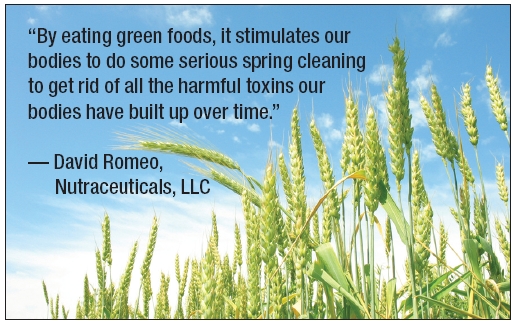 [nutrients from] alkaline foods get into the bloodstream, the nutrients help your cells to be recreated and regenerated thus helping to boost your energy levels,” states David Romeo, managing director of Nutraceuticals International LLC, Elmwood Park, NJ.
[nutrients from] alkaline foods get into the bloodstream, the nutrients help your cells to be recreated and regenerated thus helping to boost your energy levels,” states David Romeo, managing director of Nutraceuticals International LLC, Elmwood Park, NJ.
Nearly all healthy individuals can fairly easily maintain the proper pH with a good diet and appropriate supplements like green foods. States Christopher Daniels, director of product development at Greens Plus, Vero Beach, FL, “[They] buffer the body’s pH, increasing cellular alkalinity and promoting rapid nutrient absorption. The abundant supply of micronutrients found in [green foods] are quickly utilized to correct deficiencies and by mitochondria to produce cellular energy.”
 Daniels’ last point warrants some extra explanation. Mitochondria are the microstructures that break down food molecules and transfer the energy to cells (stored as ATP or adenosine triphosphate). Green food molecules may be especially helpful to these microorganisms for such energy building. In a sense, greens can help give cells the food they need to make energy efficiently and when our bodies need it most. States Mark Timon, M.S., founder of and formulator at Vibrant Health, Canaan, CT, “The result is a steady output of energy matched to the demands of the moment.”
Daniels’ last point warrants some extra explanation. Mitochondria are the microstructures that break down food molecules and transfer the energy to cells (stored as ATP or adenosine triphosphate). Green food molecules may be especially helpful to these microorganisms for such energy building. In a sense, greens can help give cells the food they need to make energy efficiently and when our bodies need it most. States Mark Timon, M.S., founder of and formulator at Vibrant Health, Canaan, CT, “The result is a steady output of energy matched to the demands of the moment.”
But again, a poor diet—such as not eating enough greens at mealtimes—could contribute to a feeling of sluggishness. Chris D. Meletis, N.D., naturopathic physician and director of science and research at Trace Minerals Research, Roy, UT, cites a 2007 report stating that 89% of Americans don’t consume the recommended minimum intake of five to seven servings of fruits and vegetables each day (2).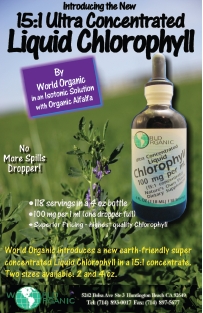
Bert explains why greens in supplement form can be a great bang for one’s nutrient buck, especially for those whose diets are greens deficient: some dehydrated green powders expand up to seven times their size. “It’s a very concentrated, convenient and affordable way to get the essential green leafy vegetable nutrition our bodies need to function at peak levels,” he states.
Plus, the nutrients may be easier for the body to extract in this form. Says Timon, “Many green foods, though not all, are remarkably nutrient dense relative to the amount of calories (in the form of macronutrients fat, protein and carbohydrate) provided by the food. Removing the water from the plant and powdering it simply concentrates that nutrient density even more, while opening cell walls and expanding surface area to make nutrients easily available.”
Another aspect of how greens support healthy energy levels is that it “stabilizes blood sugar, which results in sustained energy,” according to Jonny Bowden, Ph.D., CNS, scientific advisor to Barlean’s, Ferndale, WA. He also notes that a component found in greens (chlorophyll) may help increase hemoglobin levels in the blood. “Hemoglobin is the oxygen-binding substance in blood, so it stands to reason that more oxygen-rich blood would increase energy,” says Bowden.
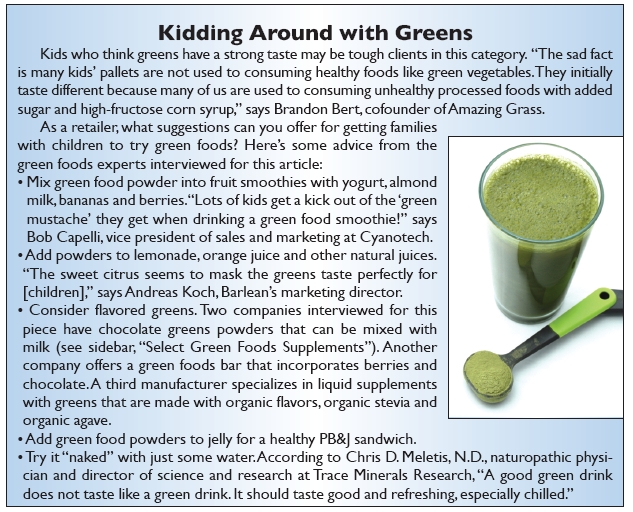 Ken Whitman, president of Peter Gillham’s Natural Vitality (maker of green supplements in liquid form), says that the connection between greens and energy is so strong that more and more athletes are becoming fans of this supplements category. He says his company’s greens energy shot is “taking off very well and has become quite popular with elite and competitive athletes.”
Ken Whitman, president of Peter Gillham’s Natural Vitality (maker of green supplements in liquid form), says that the connection between greens and energy is so strong that more and more athletes are becoming fans of this supplements category. He says his company’s greens energy shot is “taking off very well and has become quite popular with elite and competitive athletes.”
The firm has some great examples. For instance, this past May, a 13-year-old climber of Mount Everest and his family took the company’s green shot every morning to maintain energy and proper body function as they made their ascent. And, an ultra-marathoner used the greens supplement to help him finish a grueling race.
Some research has been conducted on the benefits of the blue–green algae for athletes. Over the course of three weeks, 16 athletes were either given spirulina or a soy protein plus their normal diet. Spirulina had a protective effect on muscles  that “probably led to postponement of the time of exhaustion during the all-out exercise,” stated the research group (3).
that “probably led to postponement of the time of exhaustion during the all-out exercise,” stated the research group (3).
When you explain to shoppers how energy from green foods works, be sure to let them know that the effects are nothing like a shot of espresso. “Green drinks give the body a quick boost of energy, particularly if they are used as a meal replacement,” states Jay Levy, director of sales at Wakunaga, Fullerton, CA. “Green drinks provide sustained energy without creating a jittery feeling or the ‘crash’ common to caffeine-based beverages.”
Immune and Digestive Health Go Green
Green foodies may also feel that green foods prevent them from getting sick as frequently. While this isn’t a claim retailers can make in their stores, there is evidence for how and why green foods support a healthy immune system.
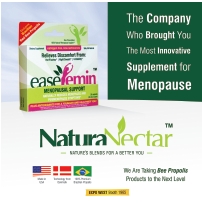 Some experts believe that the relationship goes back to cellular health. Timon states that when greens enable healthy cells to function at their best, they are better equipped to keep the body healthy. This is especially true of cells in the immune system. “A well-nourished cell will be able to battle infection, protect itself from oxidative damage and, if it is part of its role, synthesize new members of the immune system such as natural killer cells, B-cells, T-cells and the like,” he says.
Some experts believe that the relationship goes back to cellular health. Timon states that when greens enable healthy cells to function at their best, they are better equipped to keep the body healthy. This is especially true of cells in the immune system. “A well-nourished cell will be able to battle infection, protect itself from oxidative damage and, if it is part of its role, synthesize new members of the immune system such as natural killer cells, B-cells, T-cells and the like,” he says.
Chlorella, a popular component in green foods, has research behind itsability to support immune health. States Daniels, “Research has shown that chlorophyll neutralizes bacteria and viruses, and helps build red and white blood cells, the frontline fighters of the immune system.”
According to one text dedicated to this green algae, the CK strain of chlorella and Chlorella vulgaris extract (CVE) have been studied for the “treatment of tumors, boosting of immunity, suppression of metastasis and reducing toxic conditions caused by radiation and anticancer drugs” (4).
Regarding overall immune health, chlorella expert Toshihiro Kanno states that CVE may help create an environment that is particularly suited to killing certain bacteria (4) such as colon bacteria. Plus, according to the Sun Chlorella Web site, chlorella offers “nutrients to boost your immune system such as vitamins C, D and E, calcium, folic acid, beta carotene and chlorophyll. That means more disease fighting fuel for your body in a form you can conveniently take every day.” Other immune health-supporting nutrients found in greens include B-vitamins and magnesium.
Spirulina also has research support for its positive effects on the immune system. In one study, “observations indicated that in humans, spirulina acts directly on myeloid lineages and either directly or indirectly on NK cells” (5). Another study states that in the presences of spirulina macrophages, T- and B-cells are activated (6). In fact, “Preparations obtained from spirulina biomass have also been found active against herpes virus, cytomegalovirus, influenza virus, etc. Spirulina extracts are capable in inhibiting carcinogenesis” (6).
 S.K. Dash, Ph.D., president of UAS Laboratories, Inc., Eden Prairie, MN, also speaks of the immune-health benefits of the spirulina used in a new supplement (Probiogreen) from his company. He states that the blue–green algae offers “a wide range of immunomodulatory compounds such as polysaccharides, Phycocyanin (blue pigment) and antioxidant phytopigments (betacarotene, zeaxanthin, etc). These unique compounds provide a strong immunomodulatory response hence protecting the body from allergies and infections.”
S.K. Dash, Ph.D., president of UAS Laboratories, Inc., Eden Prairie, MN, also speaks of the immune-health benefits of the spirulina used in a new supplement (Probiogreen) from his company. He states that the blue–green algae offers “a wide range of immunomodulatory compounds such as polysaccharides, Phycocyanin (blue pigment) and antioxidant phytopigments (betacarotene, zeaxanthin, etc). These unique compounds provide a strong immunomodulatory response hence protecting the body from allergies and infections.”
Dash goes on to make a connection to probiotics (also included in his company’s new supplement). “Spirulina also helps to balance the body’s pH and make it more alkaline. This also supports the probiotic flora to flourish and support the digestive and immune system,” he states. Other experts agree with Dash, noting that algae like spirulina help support the growth of beneficial bacteria, which keep the immune and digestive systems healthy.
Also on the digestion front, Meletis notes that the fiber found in green foods is beneficial for gut health while Timon says that chlorophyll can help keep the lining of the gastrointestinal tract healthy.
Spring Cleaning
Whether or not shoppers realize it, cereal grasses, chlorella and the other components found in green food supplements help with detox. In a way, greens help the body rid itself of built-up toxins that accumulate as time passes. States Romeo, “It is Nature’s way of detoxifying our systems and regenerating abundant energy.”
This detoxification process may have a connection to the immune health benefits of greens. Bert states that chlorophyll (the pigment that gives green plants their color), “purifies the blood, counteracts toxins and can suppress bacterial growth.”
Levy adds some additional information about chlorophyll and its connection to tissue repair: “The chlorophyll in green foods like chlorella and cereal grasses appears to help tissues in the body repair themselves. It also mitigates the  effects of pollution, oxygenates the blood, neutralizes free radicals and deodorizes the breath and body. Barley and wheat grasses have similar properties.”
effects of pollution, oxygenates the blood, neutralizes free radicals and deodorizes the breath and body. Barley and wheat grasses have similar properties.”
Overall, be sure to recommend greens to shoppers interested in trying a detox program (once approved by his/her healthcare provider). States Bowden, “Green drinks are great for detox programs, as they provide tons of nutrients that support the liver in ‘clearing’ toxins from the body, toxins which can easily overwhelm a weakened immune system.”
Shades of Green
Many green foods specialists feel that not all greens are created equal. States Dash, “Consumers are looking ‘under the hood’ of green foods to take a look at the specific types of nutrition they provide. There is awareness that not all ingredients and formulated products offer the same nutritional value.”
Here are a few distinguishing characteristics that may make one supplement different from another. Check with your products’ manufacturers for specific information about product lines.
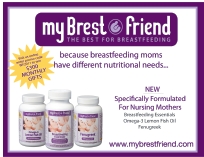 • According to Dash, spirulina contains “complete nutrition” such as protein, vitamins, antioxidants and phytonutrients. “Even within the spirulina category, consumers are responding to products that have higher levels of carotenoids, phytopigments, such as phycocyanin and chlorophyll, as well as the essential fatty acid, GLA. These are the ingredients that consumers are looking for when they choose a spirulina product. They are gravitating to those products that can offer significant health benefits and that are higher in nutrition,” he feels.
• According to Dash, spirulina contains “complete nutrition” such as protein, vitamins, antioxidants and phytonutrients. “Even within the spirulina category, consumers are responding to products that have higher levels of carotenoids, phytopigments, such as phycocyanin and chlorophyll, as well as the essential fatty acid, GLA. These are the ingredients that consumers are looking for when they choose a spirulina product. They are gravitating to those products that can offer significant health benefits and that are higher in nutrition,” he feels.
• Some greens come in combinations such as those with added superfruits or the previously mentioned probiotics–greens combination product. Levy believes there’s much value in supplements that incorporate a variety of greens like chlorella, barley grass, wheat grass and more as opposed to a single-ingredient product.
• Timon feels that parsley, cereal grass powders and cereal grass juice powders contain “more nutrients at higher potencies than practically all other foods. When plants such as these are consumed as a powdered supplement, a broad variety of nutrients at significant potencies is ultimately made available to every cell of the body. If a cell has all the nutrients it needs to function at optimal level, then energy output and waste removal will proceed at a high level of efficiency.”
• To eliminate the possibility of consuming poor-quality greens with low nutritional value, Dash suggests selling greens that are organic and/or adhere to verification standards such as those established in the U.S. Pharmacopeia. “Due to these trends, marketers are also becoming conscious about the source and quality of green foods with respect to nutrition and contamination limits,” he states.
• Meletis feels that the best green food products are processed using little or no heat.
• Delivery forms vary, such as powdered, tableted or liquid greens, each meeting different customers’ needs. A well-rounded greens selection will include various forms of greens.
|
Select Green Foods Supplements Amazing Grass: Kidz SuperFood in wild berry and in chocolate drink powder, which combines 32 rainbow-colored fruits and veggies with cocoa. For adults, Green SuperFood, Chocolate Green SuperFood, Berry Green SuperFood, Green SuperFood Energy, Amazing Meal, Whole Food Energy Bars. Barlean’s: Barlean’s Greens in both powder and capsules and Barlean’s Natural Berry Flavored Greens powder. Barlean’s will soon bring to market Chocolate Flavored Greens, which is said to taste like a cocoa drink. Country Life Vitamins: 100% Greens & Whey Powder, Beyond Food Vegetarian Caps, Green Edge II Powder, Superior Multiple. Cyanotech: Hawaiian Spirulina Pacifica as a raw material. Sister company Nutrex-Hawaii offers Hawaiian Spirulina Pacifica in tablets and powder form plus Spirulina Pacifica Men’s, Women’s and Senior’s Multivitamin. Earthrise Nutritionals: Earthrise Green Blends—Cleansing, Earthrise Chlorella, Earthrise Spirulina Gold Plus, Earthrise Spirulina Natural. Evergreen Juices: Evergreen Wheat Grass Juice. Green Foods: Green Magma, Green Tea Barley Essence, Berry Barley Essence, Magma Plus, Organic Chlorella, TrueVitality (Vanilla, Chocolate, Unflavored), Veggie Magma, Barley Cat, Barley Dog. Greens Plus: Powders are available in Wild Berry Burst and Orange Greensicle flavors. Energy Bars are available in Dark Chocolate and Yogurt-coated varieties, each with a serving of The Original Greens Plus blend. Nature’s Plus: Source of Life Animal Parade KidGreenz Children’s Chewable with Whole Food Concentrates, Source of Life Green Lightning, Fruitein Revitalizing Green Foods Shake and more. Nutraceuticals International LLC: Specialty ingredients that include barley grass, spirulina, wheat grass, alfalfa leaf, broccoli, chlorella, dulse, kelp, cilantro, artichoke, bladderwrack, lecithin, green tea, aloe vera, parsley, asparagus, watercress, peppermint leaf, green bean and more. Organic By Nature: Various raw materials such as cereal grasses, algae, Aktivated Barley, sprouts and more. Peter Gillham's Natural Vitality: Organic Life Vitamins and Kids Natural Calm Multi liquid vitamins. Both incorporate an organic green component. Also available is Energy28 whole food energizer, which contains l g of Golden Chlorella omega, greens, sprouts, superfruits and fruits, organic maca, rhodiola and d-ribose. Pines: Pines Wheat Grass (pellets, powder, tablets), Green Energy Capsules, Mighty Greens, Barley Grass (tablets, powder), Alfalfa (tablets). Sun Chlorella: Sun Chlorella, Sun Eleuthero, Sun Chlorella Cream, Sunergize, Pet Sun Chlorella and Chlorella Wakasa. Trace Minerals Research: Greens Pak and Reds Pak. UAS Laboratories, Inc.: Probiogreen, a blend of DDS probiotics and organic spirulina from Parry. Available as a finished product or as a raw material. Vibrant Health: Green Vibrance, Green Vibrance for Kids, Field of Greens and Super Natural Calcium. Wakunaga: Kyo-Green Powder, Kyo-Green Tablets, Kyo-Green Harvest Blend and Kyo-Chlorella. World Organic: Liquid Chlorophyll, Chlorophyll Capsules, Chloro-Combo, Unique Chlorophyll, Chloro–Greens Powder, Spirulina Capsules, Chlorella Capsules, Phyto-Pak Multivitamin. |
Multi-Green
Given all the protein, vitamins and minerals that are present in a high-quality green foods supplement, one may wonder whether taking a multivitamin is needed if green supplements are on the plate. Industry experts have strong feelings on both sides of the debate.
For instance, Bert believes that just greens can do the job for most people. He states, “Ninety percent of Americans need more green foods in their diet, but not everyone needs to consume a multivitamin.” The reason why is that green foods are the foundation of good health, he feels. High-quality green powders contain minimally processed whole foods, which gives individuals the best shot of absorbing their daily vitamins, minerals plus other important nutrients. Though the issue is open for debate, Bert believes that all the components present in tableted multivitamins cannot be absorbed as well as with green foods that are “minimally processed like mother-nature intended.”
Capelli tends to agree. “Consumers should all take green foods; there is no better way to get a vast array of nutrients in their most natural, easily assimilated form,” he says, adding, “Concentrated vitamin products made from synthetic vitamins are far inferior—our bodies just don’t recognize and absorb the nutrients properly. And even whole food multis, while much better than synthetic, aren’t as natural a means of getting concentrated nutrition like you’ll get from a superfood like spirulina.”
Levy suggests that one may get more nutrients from a good highly concentrated greens supplement. He states, “Multivitamins are typically designed to prevent nutritional deficiencies and most do not provide optimal amounts of key nutrients…green foods provide a wider range of important nutrients.”
Also weighing in is Bowden, who comments that multivitamins—while valuable—don’t offer as much nutritional variety as what a plant can offer. “For example, there are 6,000 flavonoids, most of which have been found to have antioxidant or anti-inflammatory effects. Many of these plant chemicals are found in the very vegetables and grasses used to make the better greens products,” he states.
Whitman of Peter Gillham’s takes a “best of both worlds” approach. His company manufactures liquid multivitamins for optimal absorption, but also includes a green component.
In the end, the decision to take greens, multivitamins or both may depend on the individual shopper and which products they are considering purchasing. In other words, there may be no across-the-board answer. With respect to greens, for instance, Timon says “Simpler, single ingredient or few ingredient formulas should be looked upon as highly nutritious, concentrated foods. The more complex ‘superfood’ formulas have the potential to serve as a multivitamin if they are sensibly and carefully formulated. Not all are so constructed, however.” WF
References
1. ph Balance, http://ournaturalhealthsite.com/phbalance.php, accessed January 21, 2011.
2. S.S. Casagrande, et al., “Have Americans Increased Their Fruit and Vegetable Intake? The Trends Between 1988 and 2002,” Amer. J. Prev. Med. 32 (4), 257–263 (2007).
3. H.K. Lu, et al., “Preventive Effects of Spirulina platensis on Skeletal Muscle Damage under Exercise-Induced Oxidative Stress,” Eur. J. Appl. Physiol. 98 (2), 220–226 (2006).
4. T. Kanno, Chlorella vulgaris and Chlorella vulgaris Extract (CVE) (Woodland Publishing, Orem, UT, 2005).
5. T. Hirahashi et al., “Activation of the Human Innate Immune System by Spirulina: Augmentation of Interferon Production and NK Cytotoxicity by Oral Administration of Hot Water Extract of Spirulina Platensis,” Int. Immunopharmacol. 2 (4), 423–434 (2002).
6. L.P. Blinkova, O.B. Gorobets and A.P. Baturo, [“Biological Activity of Spirulina,”] article in Russian, Zh Mikrobiol. Epidemiol. Immunobiol. 2,114–118 (2001).
Published in WholeFoods Magazine, March 2011

